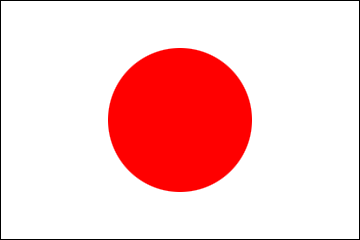Statement by Counsellor Nobutaka Sawada at the Fifty-fourth Session of Working Group B of the Preparatory Commission for the CTBTO
2020/2/17
Thank you, Mr. Chairperson.
At the outset, our delegation would like to thank Executive Secretary Dr. Lassina Zerbo for his opening remarks, and his team for their tireless work in promoting the CTBT’s verification regime. Let me also thank you, Mr. Chairperson, Dr. Joachim Schulze, for your efforts to lead and coordinate this Working Group B meeting, as well as the Task Leaders for their on-going dedicated work.
[IMS and IDC]
Mr. Chairperson,
We attach great importance to the enhancement of the CTBT verification regime to ensure that the CTBT will function effectively once the Treaty enters into force.
In this context, my delegation is pleased with the great achievement that there are now a total of 300 International Monitoring System facilities certified as a result of the new certifications of the infrasound station IS01 and the radionuclide station RL14. We also welcome the improvement in data availability of the certified IMS stations, especially the increasing trend of available data from hydroacoustic stations.
It is planned that all five auxiliary seismic stations in Japan will be upgraded and revalidated in 2020, in order to contribute to not only improving their data availability, but also obtaining higher quality data.
[OSI]
Mr. Chairperson,
On-site inspections (OSI) are the verification regime’s final and definitive verification measure to verify whether a nuclear test took place.
My delegation congratulates the PTS on successfully conducting the OSI build-up exercise (BUE-L) that focused on the launch phase of an inspection. We are pleased that the exercise led to further enhancement of OSI operational capability.
We would like to express our sincere gratitude to the host country of the BUE-IN and BUE-C, the Slovak Republic. Japan will actively contribute to these exercises through sending experts with the hope that they will further reinforce the operational capabilities of the OSI.
[Global Seismological Observation Training Course]
Mr. Chairperson,
Regarding capacity building, Japan has been convening the annual JICA Global Seismological Observation Training Course since 1995. The purpose of this training is to develop human resources with skills of both seismic observation to detect nuclear tests and data analysis to identify them, which can play a crucial role for the verification regime of the Treaty. We highly appreciate the continuous cooperation of the PTS for this course. 271 trainees from 79 countries have participated in this course in the last 25 years and Japan is committed to continuing this successful course in the future. We hope that state signatories actively utilize this course.
[Mobile noble gas measurement system]
Mr. Chairperson,
Understanding of the xenon background is essential to strengthening the capability of detecting nuclear tests. We fully support the current activities of the PTS and are anticipating a fruitful outcome.
In closing, I would like to assure you, Mr. Chairperson, and the Task Leaders, of Japan’s continuous support and engagement in all sessions of the WGB.
I thank you, Mr. Chairperson.
At the outset, our delegation would like to thank Executive Secretary Dr. Lassina Zerbo for his opening remarks, and his team for their tireless work in promoting the CTBT’s verification regime. Let me also thank you, Mr. Chairperson, Dr. Joachim Schulze, for your efforts to lead and coordinate this Working Group B meeting, as well as the Task Leaders for their on-going dedicated work.
[IMS and IDC]
Mr. Chairperson,
We attach great importance to the enhancement of the CTBT verification regime to ensure that the CTBT will function effectively once the Treaty enters into force.
In this context, my delegation is pleased with the great achievement that there are now a total of 300 International Monitoring System facilities certified as a result of the new certifications of the infrasound station IS01 and the radionuclide station RL14. We also welcome the improvement in data availability of the certified IMS stations, especially the increasing trend of available data from hydroacoustic stations.
It is planned that all five auxiliary seismic stations in Japan will be upgraded and revalidated in 2020, in order to contribute to not only improving their data availability, but also obtaining higher quality data.
[OSI]
Mr. Chairperson,
On-site inspections (OSI) are the verification regime’s final and definitive verification measure to verify whether a nuclear test took place.
My delegation congratulates the PTS on successfully conducting the OSI build-up exercise (BUE-L) that focused on the launch phase of an inspection. We are pleased that the exercise led to further enhancement of OSI operational capability.
We would like to express our sincere gratitude to the host country of the BUE-IN and BUE-C, the Slovak Republic. Japan will actively contribute to these exercises through sending experts with the hope that they will further reinforce the operational capabilities of the OSI.
[Global Seismological Observation Training Course]
Mr. Chairperson,
Regarding capacity building, Japan has been convening the annual JICA Global Seismological Observation Training Course since 1995. The purpose of this training is to develop human resources with skills of both seismic observation to detect nuclear tests and data analysis to identify them, which can play a crucial role for the verification regime of the Treaty. We highly appreciate the continuous cooperation of the PTS for this course. 271 trainees from 79 countries have participated in this course in the last 25 years and Japan is committed to continuing this successful course in the future. We hope that state signatories actively utilize this course.
[Mobile noble gas measurement system]
Mr. Chairperson,
Understanding of the xenon background is essential to strengthening the capability of detecting nuclear tests. We fully support the current activities of the PTS and are anticipating a fruitful outcome.
In closing, I would like to assure you, Mr. Chairperson, and the Task Leaders, of Japan’s continuous support and engagement in all sessions of the WGB.
I thank you, Mr. Chairperson.
